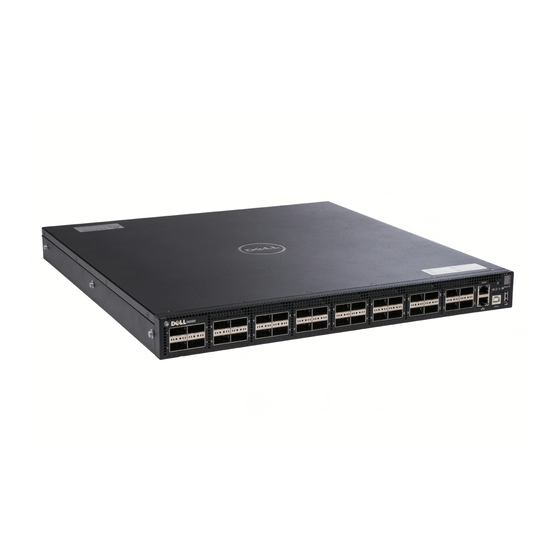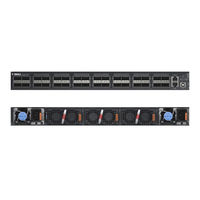
Dell S6000-ON Manuals
Manuals and User Guides for Dell S6000-ON. We have 4 Dell S6000-ON manuals available for free PDF download: Configuration Manual, Installation Manual, Troubleshooting Manual, Getting Started Manual
Dell S6000-ON Configuration Manual (1080 pages)
Table of Contents
-
-
Audience34
-
Conventions34
-
-
-
Management
57 -
-
802.1X
82 -
-
IP Prefix Lists116
-
ACL Resequencing121
-
Route Maps123
-
-
How BFD Works127
-
BFD Sessions130
-
Configure BFD132
-
-
-
Route Reflectors160
-
BGP Attributes161
-
Weight164
-
Local Preference164
-
Origin166
-
AS Path167
-
Next Hop167
-
-
Enabling BGP175
-
-
Debugging BGP211
-
Capturing Pdus213
-
PDU Counters214
-
-
CAM Allocation221
-
Test CAM Usage223
-
View CAM Usage226
-
CAM Optimization227
-
-
-
-
-
Fcoe Transit
313 -
-
-
-
Ring Status338
-
-
-
-
-
IGMP Version 2354
-
IGMP Version 3356
-
-
Configure IGMP359
-
Adjusting Timers361
-
IGMP Snooping362
-
-
Interfaces
375-
Interface Types376
-
VLAN Interfaces387
-
Null Interfaces388
-
-
Link Dampening406
-
-
Port-Pipes410
-
Dynamic Counters415
-
Ipv4 Routing
420-
IP Addresses420
-
Arp427
-
Icmp431
-
UDP Helper432
-
-
Ipv6 Routing
437-
Icmpv6446
-
-
SNMP over Ipv6453
-
-
-
-
IS-IS Addressing470
-
-
Transition Mode471
-
Adjacencies472
-
-
Graceful Restart472
-
Timers472
-
-
-
Layer 2
511-
-
NIC Teaming516
-
-
Optional Tlvs527
-
Management Tlvs527
-
-
Configure LLDP534
-
Enabling LLDP536
-
Advertising Tlvs537
-
Debugging LLDP542
-
-
Anycast RP555
-
Enable MSDP559
-
Debugging MSDP570
-
-
Object Tracking
602 -
-
-
Overview657
-
-
-
Enable PIM-SM668
Advertisement
Advertisement
Dell S6000-ON Getting Started Manual (26 pages)
open networking (on)
Brand: Dell
|
Category: Network Router
|
Size: 0.79 MB
Table of Contents
-
-
-
Fans11
Advertisement



